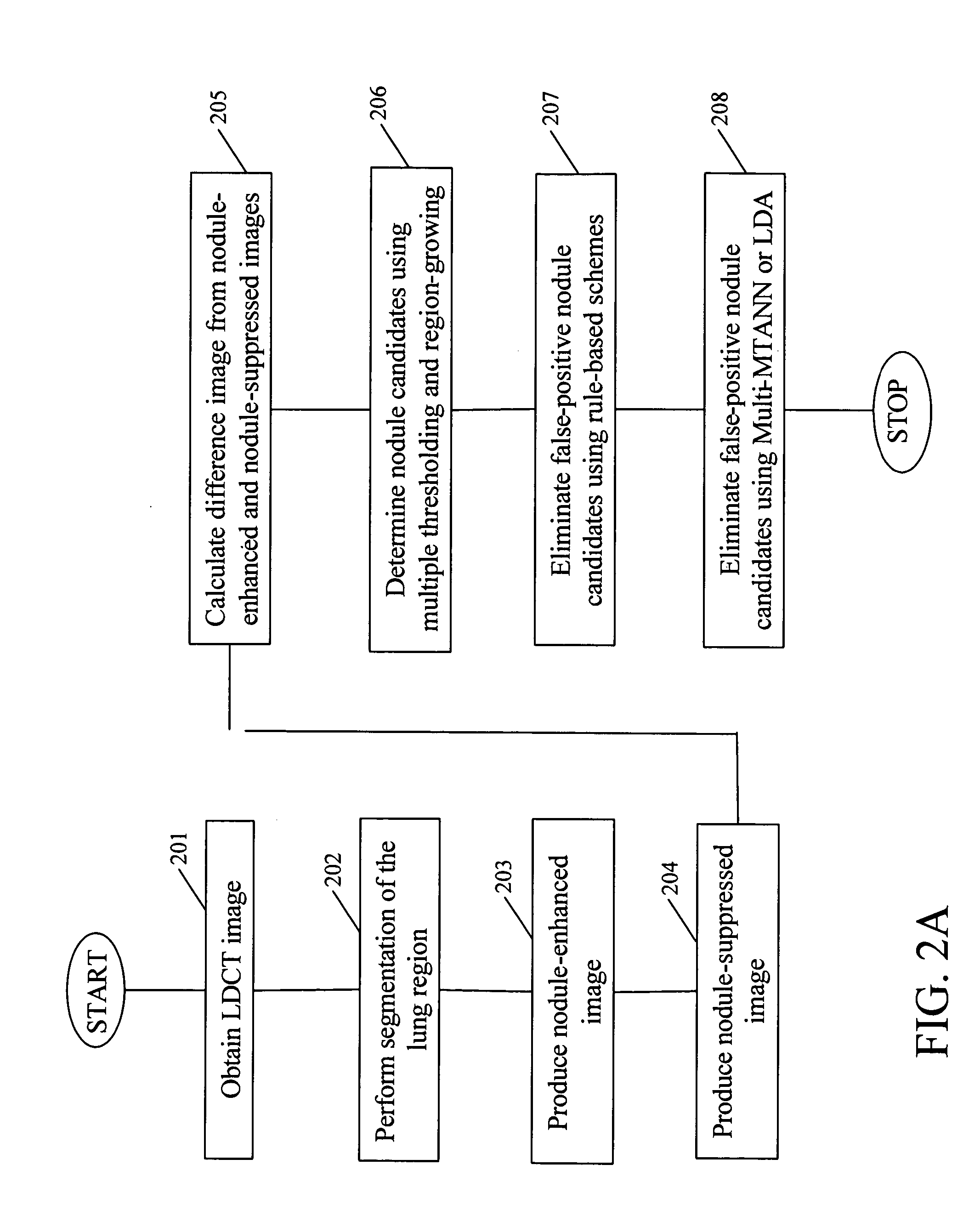Automated method and system for the detection of lung nodules in low-dose CT image for lung-cancer screening
- Summary
- Abstract
- Description
- Claims
- Application Information
AI Technical Summary
Benefits of technology
Problems solved by technology
Method used
Image
Examples
Embodiment Construction
[0069] Referring now to the drawings, wherein like reference numerals designate identical or corresponding parts throughout the several views, FIG. 2A illustrates the method for detecting pulmonary nodules on LDCT images according to the present invention. The present method is based on a difference-image technique [15-17] in which structures similar to nodules are enhanced, and most of the background normal structures, such as small vessels or background noise, are suppressed.
[0070] In step 201, a medical image (e.g., a LDCT slice image) of the lungs is obtained. The medical image may be obtained directly from a CT scanner or from a medical image database.
[0071] In step 202, the left or right lung region of the medical image obtained in step 201 is segmented by use of a linear discriminant method on the histogram of CT values [20], wherein a threshold CT level is automatically determined for dividing a body region into lung regions and other tissue regions. For smoothing the outl...
PUM
 Login to View More
Login to View More Abstract
Description
Claims
Application Information
 Login to View More
Login to View More - R&D
- Intellectual Property
- Life Sciences
- Materials
- Tech Scout
- Unparalleled Data Quality
- Higher Quality Content
- 60% Fewer Hallucinations
Browse by: Latest US Patents, China's latest patents, Technical Efficacy Thesaurus, Application Domain, Technology Topic, Popular Technical Reports.
© 2025 PatSnap. All rights reserved.Legal|Privacy policy|Modern Slavery Act Transparency Statement|Sitemap|About US| Contact US: help@patsnap.com



